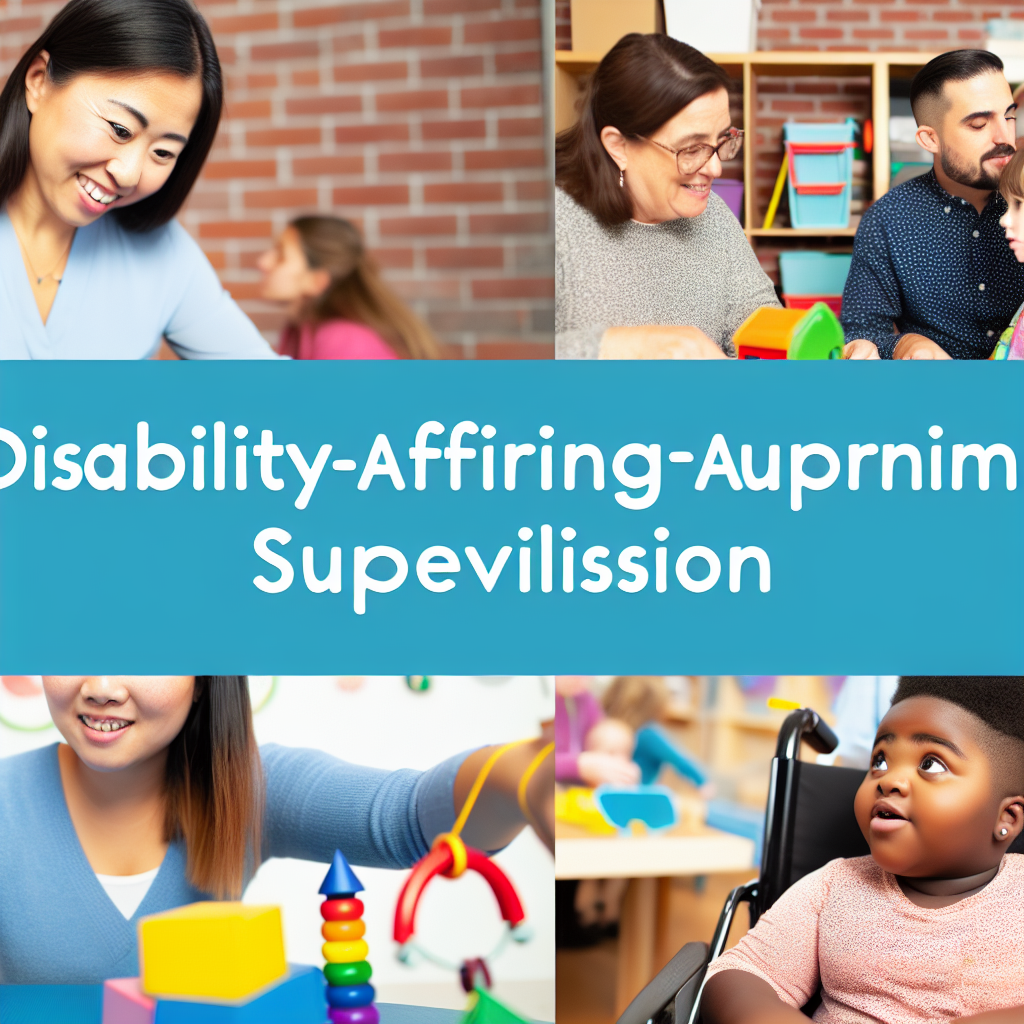Disability-Affirming Supervision in Applied Behavior Analysis (ABA)
Introduction
In recent years, there has been a growing emphasis on diversity, equity, and inclusion across various professional fields. In applied behavior analysis (ABA), this discussion has expanded beyond race, gender, and culture to address the experiences of individuals with disabilities. However, one critical area that remains underdeveloped is disability-affirming supervision.
Applied behavior analysts play a key role in shaping the next generation of practitioners through supervision. According to Jojo (2024), ABA has made progress in promoting culturally responsive practices, but disability-affirming approaches in supervision are still lacking. Drawing insights from psychology and other fields, ABA can improve its supervision systems to better support supervisees with disabilities.
This blog post explores the importance of disability-affirming supervision, the barriers faced by supervisees with disabilities, and actionable strategies for fostering a more inclusive environment in ABA.
The Importance of Supervision in ABA
Supervision is an essential aspect of developing competent behavior analysts. The Behavior Analyst Certification Board (BACB) first introduced structured supervision guidelines in 2011, which have since evolved to improve training and accountability. As of today, BACB-certified supervisors must adhere to strict competency and ethics requirements when guiding their trainees.
Effective supervision:
- Ensures adherence to ethical and professional standards.
- Helps trainees develop critical clinical skills.
- Provides mentorship and professional growth opportunities.
While the field has made strides in cultural competency, disability inclusion lags behind. Supervisors must recognize that disability-affirming approaches are just as critical for ethical and effective supervision.
Current Gaps in Disability-Affirming Supervision
Despite the evolution of supervision standards in ABA, there is still limited guidance on supporting supervisees with disabilities. In comparison, psychology and other healthcare fields have made greater strides in creating disability-inclusive training environments.
Some key gaps in ABA supervision include:
- Lack of disability education: Most behavior analysts receive little to no training on disability rights, accessibility, or accommodations.
- Minimal accommodation standards: Unlike other professions, ABA lacks clear guidelines on how to accommodate supervisees with disabilities.
- Limited representation: Few behavior analysts with disabilities hold leadership positions, making it harder to advocate for inclusive policies.
Supervision should not only focus on clinical competency but also create an affirming environment where trainees with disabilities feel valued and supported.
Understanding Disability in Applied Behavior Analysis
To foster a disability-affirming supervision model, supervisors must first understand the different ways disability can present. Disabilities are classified into three key dimensions:
- Impairments: Physical, cognitive, sensory, or developmental conditions that impact functioning.
- Activity Limitations: Difficulties in performing everyday tasks, such as mobility challenges or speech impairments.
- Participation Restrictions: Barriers that limit engagement in work, education, or social settings.
Common causes of disabilities include:
- Congenital conditions (e.g., Down syndrome, cerebral palsy)
- Developmental disorders (e.g., autism spectrum disorder, ADHD)
- Injury-related disabilities (e.g., traumatic brain injury, spinal cord damage)
- Chronic illnesses (e.g., multiple sclerosis, diabetes)
- Progressive conditions (e.g., Parkinson’s disease, muscular dystrophy)
Understanding these classifications helps supervisors provide appropriate accommodations and avoid assumptions about what a supervisee can or cannot do.
Barriers Faced by Supervisees with Disabilities
ABA trainees who have disabilities may encounter obstacles in their training that their peers do not face. These challenges can be divided into three main categories:
1. Attitudinal Barriers
Negative perceptions and biases about disability can lead to discrimination or exclusion in training environments. Examples include:
- Supervisors assuming that supervisees with disabilities cannot complete essential job tasks.
- Stigmas surrounding accommodations, leading supervisors to see them as "special privileges."
- A lack of confidence in the abilities of disabled supervisees, resulting in fewer opportunities for leadership roles.
2. Institutional Barriers
Organizational policies often fail to account for disability-related needs, making it harder for supervisees to access necessary supports. Common institutional barriers include:
- Lack of formal accommodation policies for disabled supervisees.
- Inconsistent scheduling that does not consider transportation or medical needs.
- Workload expectations that do not allow for flexibility when health-related issues arise.
3. Disability-Related Barriers
Some challenges stem from the nature of a disability itself, which can impact one's ability to fully engage in supervision when adequate accommodations are not provided. Examples include:
- A deaf supervisee struggling to follow verbal instruction in group meetings.
- A visually impaired supervisee not having access to large-print data sheets.
- A trainee with chronic fatigue requiring modified work schedules but facing resistance from supervisors.
By identifying these barriers, supervisors can implement solutions that create a more inclusive and affirming supervision experience.
Strategies for Disability-Affirming Supervision
Supervisors can take proactive steps to ensure their practices are disability-affirming. Some key strategies include:
-
Educate Yourself on Disability Rights and Inclusion
- Familiarize yourself with the Americans with Disabilities Act (ADA) and other disability laws.
- Attend workshops or training on disability inclusion and advocacy.
- Seek feedback from disabled individuals and professionals in the field.
-
Provide Individualized Accommodations
- Ask supervisees what accommodations they need rather than making assumptions.
- Offer options for flexible scheduling, assistive technology, or modified training methods.
- Ensure learning materials are accessible (e.g., captions for videos, alternative note-taking formats).
-
Promote Open Communication and Psychological Safety
- Create an environment where supervisees feel comfortable disclosing their disability without fear of stigma.
- Schedule regular check-ins to discuss any supervision-related barriers.
- Encourage supervisees to advocate for their needs without judgment.
- Model Inclusive Practices for the Field
- Advocate for disability-inclusive policies within your organization.
- Challenge ableist assumptions in ABA training and professional development.
- Support disabled supervisees in advancing to leadership roles.
ABA supervision should be a space where all trainees, regardless of ability, can thrive. Integrating disability-affirming approaches benefits not only supervisees with disabilities but also strengthens the ethical and professional integrity of the field.
Conclusion
The field of ABA has made progress in promoting cultural competence, but disability-affirming supervision is an area that requires urgent attention. Research by Jojo (2024) highlights the need for supervisors to move beyond compliance and actively foster inclusive, supportive environments for supervisees with disabilities.
By addressing attitudinal, institutional, and disability-related barriers, supervisors can ensure that all aspiring behavior analysts have an equitable path to success. Implementing education, accommodations, open communication, and advocacy within supervision will help our field move toward a more affirming and ethical future.
Interested in learning more? Read the full article by Grace Ecko Jojo:
Disability-Affirming Supervision: Future Directions in Applied Behavior Analytic Supervision.



